Growing Chili Peppers at Home can seem daunting, but trust me, it’s easier than you think! Imagine plucking fiery, vibrant peppers straight from your own garden, ready to spice up your next meal. Forget those bland, store-bought chilies – we’re talking about homegrown flavor that packs a serious punch!
For centuries, chili peppers have been cultivated and cherished across cultures, from their origins in South America to their integral role in cuisines worldwide. They’re not just about heat; they’re about adding depth, complexity, and a touch of adventure to your cooking. But why rely on grocery stores when you can have a thriving chili pepper patch right outside your door?
Many people shy away from growing their own chilies, thinking it requires a green thumb or extensive gardening knowledge. That’s where this DIY guide comes in! I’m here to share simple, effective tricks and hacks that will empower you to successfully growing chili peppers at home, even if you’re a complete beginner. We’ll cover everything from choosing the right varieties to troubleshooting common problems, ensuring you have a bountiful harvest of delicious, fiery peppers. Get ready to unleash your inner gardener and add some spice to your life!
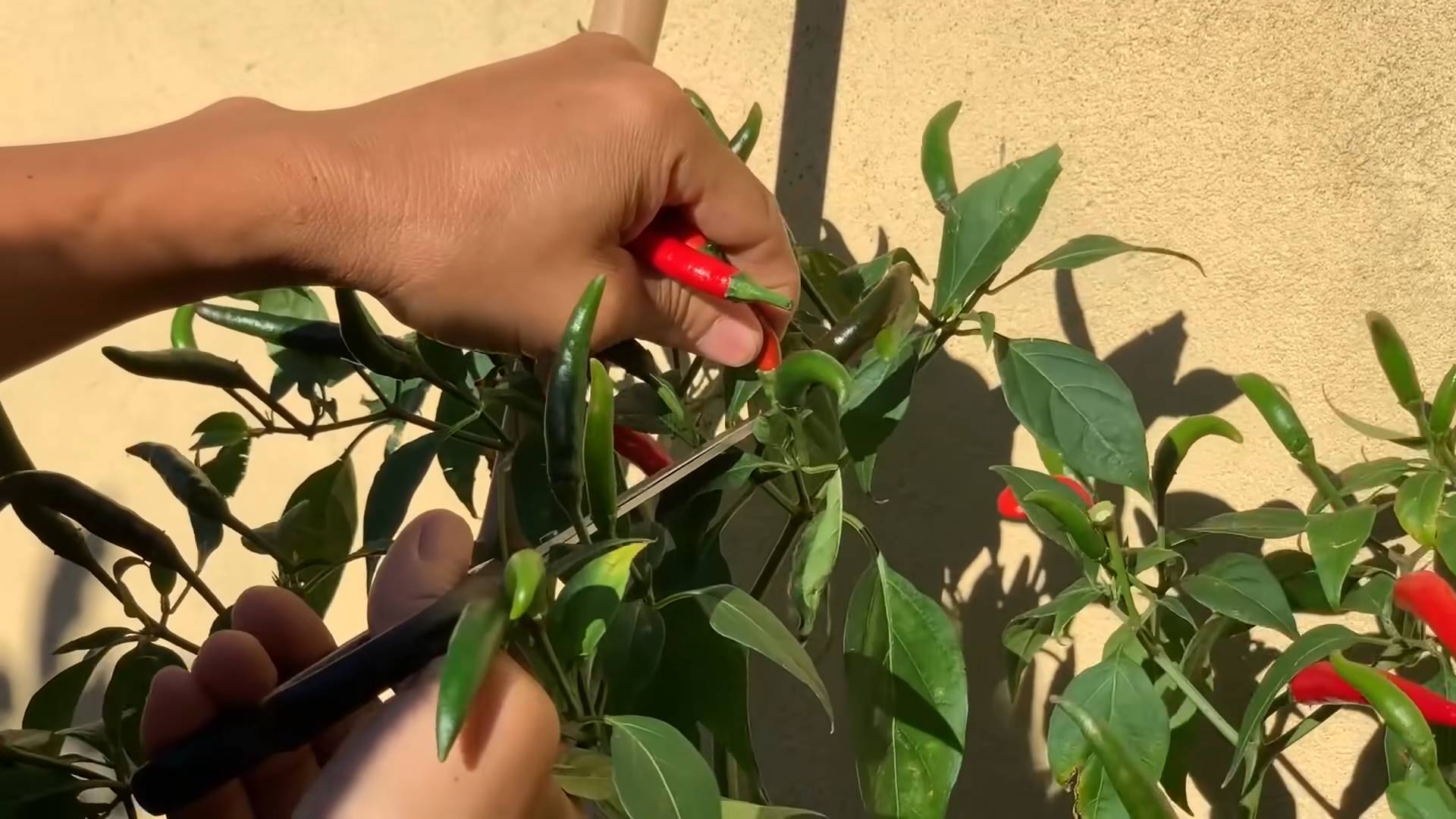
Growing Fiery Chili Peppers at Home: A DIY Guide
Hey there, fellow spice enthusiasts! Ever dreamt of having a constant supply of fresh, fiery chili peppers right at your fingertips? Well, you’ve come to the right place! I’m going to walk you through everything you need to know to successfully grow chili peppers at home, whether you have a sprawling garden or just a sunny windowsill. Get ready to add some serious heat to your cooking!
Choosing Your Chili Pepper Varieties
Before we dive into the nitty-gritty, let’s talk about choosing the right chili pepper varieties for you. The world of chili peppers is vast and exciting, ranging from mild and fruity to scorching hot. Consider your taste preferences, the space you have available, and your local climate.
Here’s a quick rundown of some popular choices:
* **Bell Peppers:** Okay, these aren’t technically chili peppers, but they’re a great starting point if you’re new to growing peppers. They’re sweet, mild, and easy to grow.
* **Jalapeños:** A classic choice for adding a moderate kick to your dishes. They’re relatively easy to grow and produce a good yield.
* **Serrano Peppers:** A step up in heat from jalapeños, serranos offer a bright, fresh flavor.
* **Cayenne Peppers:** These slender red peppers are perfect for drying and grinding into chili powder. They pack a decent punch of heat.
* **Habanero Peppers:** Now we’re talking serious heat! Habaneros are fruity and floral, but they’re also incredibly spicy. Handle with care!
* **Ghost Peppers (Bhut Jolokia):** For the truly adventurous! Ghost peppers are among the hottest peppers in the world. Proceed with caution and wear gloves when handling them.
* **Scotch Bonnet Peppers:** Similar in heat to habaneros, Scotch bonnets have a distinctive fruity flavor that’s popular in Caribbean cuisine.
Tip: Research the specific needs of each variety you choose, as some may require more sunlight or have different watering requirements.
Starting Your Chili Peppers from Seed
Starting from seed gives you the most control over the entire growing process. I personally find it incredibly rewarding to watch those tiny seeds sprout and grow into thriving pepper plants.
Here’s how to do it:
1. **Gather Your Supplies:** You’ll need:
* Chili pepper seeds (obviously!)
* Seed starting trays or small pots
* Seed starting mix (a light, sterile potting mix)
* A spray bottle filled with water
* A heat mat (optional, but helpful)
* A grow light (optional, but recommended if you don’t have a very sunny windowsill)
2. **Sow the Seeds:**
* Moisten the seed starting mix. It should be damp but not soggy.
* Fill the seed starting trays or pots with the moistened mix.
* Make a small indentation (about 1/4 inch deep) in the center of each cell or pot.
* Place 1-2 seeds in each indentation.
* Gently cover the seeds with the seed starting mix.
* Lightly mist the surface with water.
3. **Provide Warmth and Light:**
* Place the seed starting trays or pots on a heat mat (if using). Chili pepper seeds germinate best in warm temperatures (around 80-85°F).
* Position the grow light a few inches above the trays or pots (if using). If you’re using a windowsill, choose a south-facing window that receives plenty of sunlight.
4. **Keep the Soil Moist:**
* Check the soil moisture daily. Use a spray bottle to mist the surface whenever the soil feels dry to the touch. Avoid overwatering, as this can lead to fungal diseases.
5. **Be Patient:**
* Chili pepper seeds can take anywhere from 7 to 21 days to germinate, depending on the variety and the growing conditions. Don’t give up if you don’t see sprouts right away!
6. **Thin the Seedlings:**
* Once the seedlings have emerged and have a few sets of true leaves (the leaves that look like miniature versions of the adult plant’s leaves), thin them out so that only one seedling remains in each cell or pot. Choose the strongest, healthiest-looking seedling and snip off the others at the soil line.
Transplanting Your Chili Pepper Seedlings
Once your seedlings have grown a bit larger and have a well-developed root system, it’s time to transplant them into larger pots or directly into your garden.
1. **Harden Off the Seedlings:**
* Before transplanting, you’ll need to “harden off” the seedlings to acclimate them to outdoor conditions. This involves gradually exposing them to sunlight, wind, and temperature fluctuations over a period of 7-10 days.
* Start by placing the seedlings outdoors in a sheltered location for just an hour or two each day. Gradually increase the amount of time they spend outdoors each day, and also gradually expose them to more direct sunlight and wind.
2. **Choose a Sunny Location:**
* Chili peppers need at least 6-8 hours of sunlight per day to thrive. Choose a location in your garden that receives plenty of sunshine.
3. **Prepare the Soil:**
* Chili peppers prefer well-drained soil that is rich in organic matter. Amend the soil with compost or other organic matter before planting.
4. **Transplant the Seedlings:**
* Dig a hole that is slightly larger than the root ball of the seedling.
* Gently remove the seedling from its pot, being careful not to damage the roots.
* Place the seedling in the hole and backfill with soil.
* Water thoroughly.
5. **Space the Plants Properly:**
* Space the plants according to the mature size of the variety you’re growing. Generally, you’ll want to space them about 18-24 inches apart.
Caring for Your Chili Pepper Plants
Now that your chili pepper plants are in the ground, it’s time to provide them with the care they need to flourish.
1. **Watering:**
* Water your chili pepper plants regularly, especially during hot, dry weather. Water deeply, allowing the soil to dry out slightly between waterings. Avoid overwatering, as this can lead to root rot.
2. **Fertilizing:**
* Feed your chili pepper plants with a balanced fertilizer every 2-3 weeks. Look for a fertilizer that is specifically formulated for vegetables or tomatoes.
3. **Mulching:**
* Apply a layer of mulch around the base of the plants to help retain moisture, suppress weeds, and regulate soil temperature.
4. **Pruning:**
* Pruning is not essential for chili pepper plants, but it can help to improve air circulation and encourage bushier growth. You can prune away any dead or yellowing leaves, as well as any suckers (small shoots that grow from the base of the plant).
5. **Pest and Disease Control:**
* Keep an eye out for pests and diseases. Common pests of chili peppers include aphids, whiteflies, and spider mites. Common diseases include fungal diseases like powdery mildew and blossom end rot.
* If you notice any pests or diseases, take action promptly. You can use organic pest control methods like insecticidal soap or neem oil to control pests. For fungal diseases, you can use a fungicide.
6. **Support:**
* Taller chili pepper varieties may need support to prevent them from toppling over, especially when they are laden with fruit. You can use stakes or cages to provide support.
Harvesting Your Chili Peppers
The moment you’ve been waiting for! Harvesting your own homegrown chili peppers is incredibly satisfying.
1. **When to Harvest:**
* The timing of the harvest depends on the variety of chili pepper you’re growing and your personal preferences. Generally, chili peppers are ready to harvest when they have reached their mature size and color.
* For green chili peppers like jalapeños, you can harvest them when they are still green and firm. For red chili peppers like cayenne peppers, you can harvest them when they have turned fully red.
2. **How to Harvest:**
* Use a sharp knife or scissors to cut the chili peppers from the plant. Leave a small piece of stem attached to the pepper.
3. **Handling Hot Peppers:**
* When handling hot chili peppers, it’s important to wear gloves to protect your skin from the capsaicin, the compound that makes chili peppers hot. Avoid touching your eyes or face after handling hot peppers.
4. **Storing Your Chili Peppers:**
* Fresh chili peppers can be stored in the refrigerator for up to a week. You can also dry them, freeze them, or pickle them for longer-term storage.
Troubleshooting Common Problems
Even with the best care, you may encounter some problems when growing
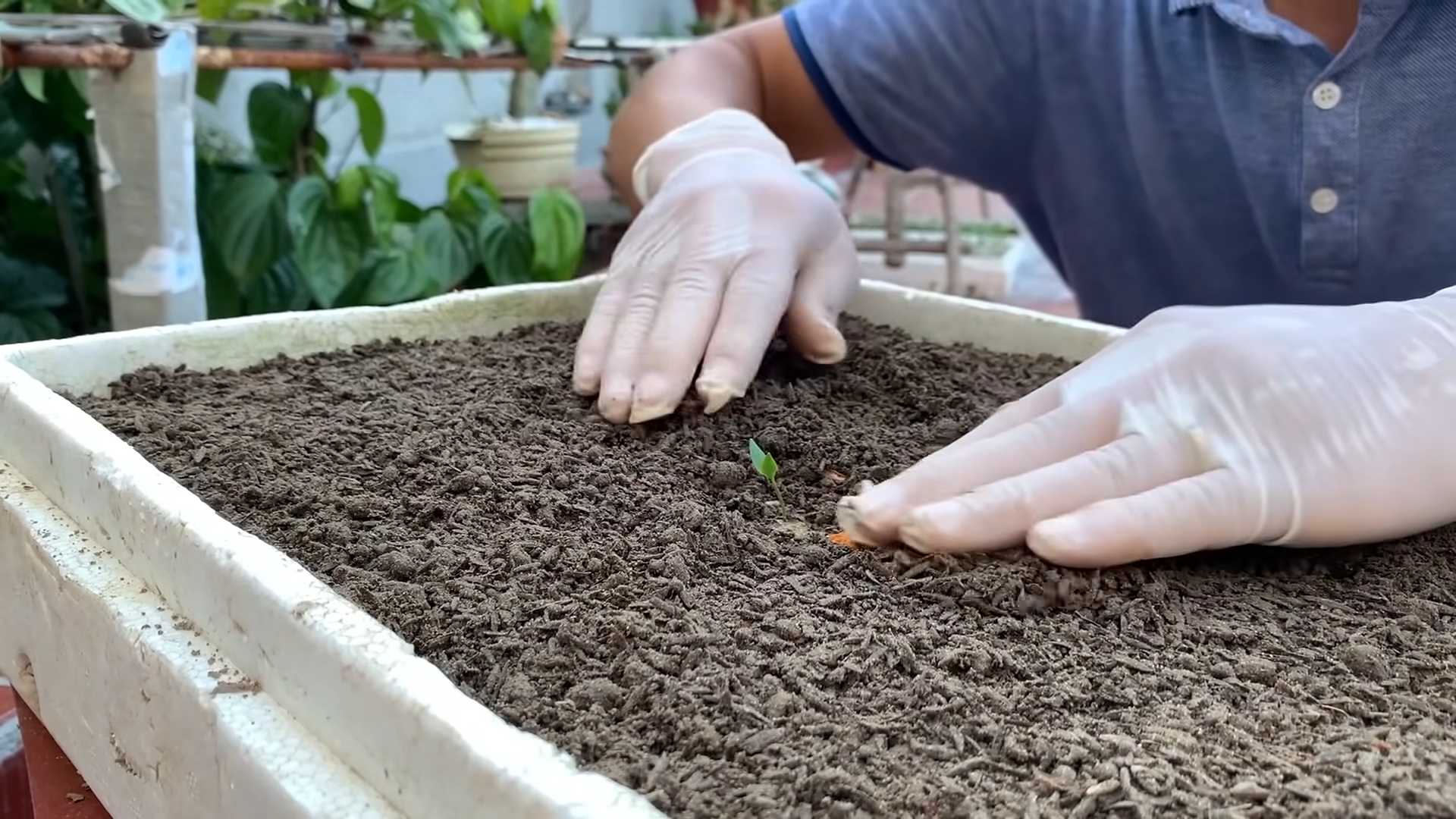
Conclusion
So, there you have it! Growing chili peppers at home, while it might seem daunting at first, is an incredibly rewarding experience that brings a burst of flavor and a touch of fiery pride to your kitchen. We’ve covered everything from seed selection and germination to transplanting, nurturing, and finally, harvesting your own vibrant chilies. But why should you bother with all this effort when you can simply buy peppers at the store?
The answer lies in the unparalleled freshness and control you gain. Store-bought chilies, while convenient, often lack the intense flavor and heat that homegrown varieties possess. Plus, you have no idea how they were grown or what chemicals they might have been exposed to. When you grow your own, you know exactly what you’re getting: organically grown, perfectly ripe chilies bursting with flavor.
Beyond the superior taste, growing chili peppers at home offers a unique connection to your food. There’s something deeply satisfying about nurturing a tiny seed into a thriving plant that produces delicious fruit. It’s a tangible reminder of the natural world and a fantastic way to connect with the growing process.
And let’s not forget the sheer variety! While your local grocery store might offer a handful of common chili types, the world of chili peppers is vast and diverse. From the mild and fruity poblano to the scorching habanero and the exotic ghost pepper, there’s a chili out there for every palate. Growing your own allows you to explore this incredible diversity and discover new flavors that you never knew existed.
This DIY trick is a must-try because it empowers you to cultivate your own supply of fresh, flavorful, and organic chili peppers, tailored to your exact preferences. Imagine the satisfaction of adding a pinch of your own homegrown cayenne pepper to your favorite dish or whipping up a batch of homemade hot sauce with your own fiery habaneros.
But the journey doesn’t end here! Feel free to experiment with different growing techniques. Try companion planting with herbs like basil or oregano to deter pests and enhance flavor. Explore different soil mixes to find what works best for your climate and chili variety. Consider using hydroponics for a faster and more efficient growing experience.
Variations abound! You can grow your chili peppers in containers on your balcony, in raised beds in your garden, or even indoors with the help of grow lights. The possibilities are endless.
We wholeheartedly encourage you to give this DIY trick a try. Start small, perhaps with a few easy-to-grow varieties like jalapenos or serranos. Don’t be afraid to make mistakes – that’s how you learn! And most importantly, have fun with it.
Once you’ve harvested your first batch of homegrown chilies, we’d love to hear about your experience. Share your photos, recipes, and tips in the comments below. Let’s create a community of chili-growing enthusiasts and inspire others to embark on this flavorful journey. So, grab your seeds, get your hands dirty, and get ready to experience the joy of growing chili peppers at home!
Frequently Asked Questions (FAQ)
What are the easiest chili peppers to grow for beginners?
For beginners, jalapenos, serranos, and poblano peppers are excellent choices. They are relatively easy to germinate, grow, and maintain. They are also quite forgiving of minor mistakes. These varieties also tend to produce a good yield, providing a satisfying harvest for your efforts. They are also readily available as seeds or starter plants at most garden centers.
How much sunlight do chili peppers need?
Chili peppers thrive in full sunlight, requiring at least 6-8 hours of direct sunlight per day. Insufficient sunlight can lead to leggy growth, reduced flowering, and smaller, less flavorful peppers. If you’re growing your chili peppers indoors, consider using grow lights to supplement natural sunlight. Position the grow lights close to the plants and adjust the height as they grow.
What kind of soil is best for growing chili peppers?
Chili peppers prefer well-draining, fertile soil with a slightly acidic to neutral pH (around 6.0-7.0). A good soil mix should be rich in organic matter, such as compost or well-rotted manure. Avoid heavy clay soils, as they can retain too much moisture and lead to root rot. You can amend clay soils by adding organic matter and perlite to improve drainage. A commercially available potting mix designed for vegetables is also a good option.
How often should I water my chili pepper plants?
Water your chili pepper plants regularly, especially during hot and dry weather. The soil should be kept consistently moist but not waterlogged. Overwatering can lead to root rot, while underwatering can stress the plants and reduce yields. Check the soil moisture by sticking your finger about an inch deep into the soil. If it feels dry, it’s time to water. Water deeply and thoroughly, allowing the water to drain out of the bottom of the pot.
When should I fertilize my chili pepper plants?
Fertilize your chili pepper plants regularly throughout the growing season. Start fertilizing about two weeks after transplanting the seedlings into their final containers or garden beds. Use a balanced fertilizer with equal amounts of nitrogen, phosphorus, and potassium (e.g., 10-10-10). Follow the instructions on the fertilizer package for application rates. You can also use organic fertilizers, such as compost tea or fish emulsion. Avoid over-fertilizing, as this can lead to excessive foliage growth and reduced fruit production.
How do I protect my chili pepper plants from pests and diseases?
Chili pepper plants can be susceptible to various pests and diseases, including aphids, spider mites, whiteflies, and fungal diseases. Regularly inspect your plants for signs of infestation or disease. If you spot any pests, try spraying them off with a strong stream of water or using insecticidal soap. For fungal diseases, ensure good air circulation around the plants and avoid overwatering. You can also use fungicides if necessary. Companion planting with herbs like basil or marigolds can help deter pests.
How do I know when my chili peppers are ripe?
The color of the chili pepper is the primary indicator of ripeness, but it varies depending on the variety. Generally, chili peppers will turn from green to red, yellow, orange, or brown when they are ripe. The pepper should also feel firm and slightly heavy for its size. You can also taste a small piece of the pepper to check for ripeness and heat level.
Can I grow chili peppers indoors?
Yes, you can grow chili peppers indoors, but you’ll need to provide them with adequate sunlight or grow lights. Choose a sunny location near a south-facing window or use grow lights to supplement natural sunlight. Use a well-draining potting mix and water regularly. You may also need to hand-pollinate the flowers to ensure fruit production.
How can I increase the heat level of my chili peppers?
Several factors can influence the heat level of chili peppers, including genetics, growing conditions, and stress. To increase the heat level, ensure your plants receive plenty of sunlight and water. Avoid over-fertilizing, as this can reduce the heat level. You can also stress the plants slightly by withholding water for short periods. Some growers believe that adding Epsom salts to the soil can also increase the heat level.
What can I do with my harvested chili peppers?
The possibilities are endless! You can use your harvested chili peppers fresh in salsas, sauces, and other dishes. You can also dry them, pickle them, or make hot sauce. Dried chili peppers can be ground into chili powder or used to infuse oils and vinegars. Pickled chili peppers are a great way to preserve them and add a spicy kick to your meals. Hot sauce is a classic way to showcase the flavor and heat of your homegrown chilies. Experiment and find your favorite ways to use your bounty!

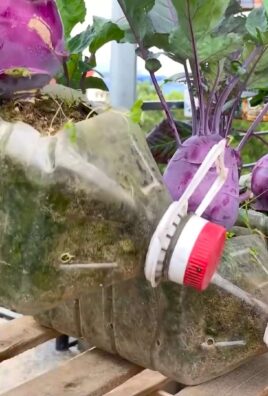
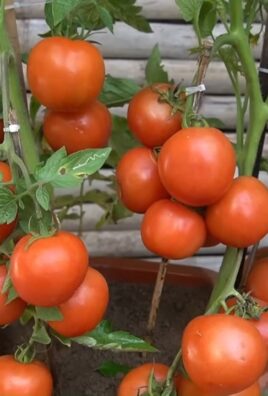
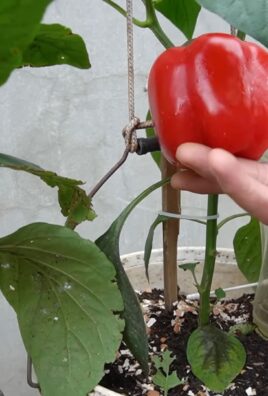
Leave a Comment